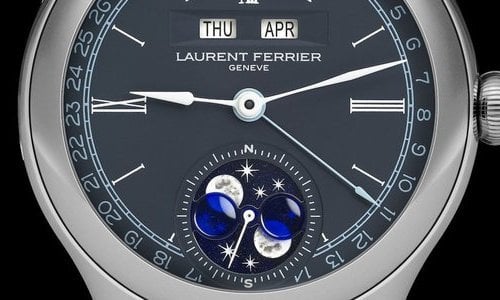
With the economic decline, we cannot help but observe a distressing fact: the financial community has not learned any lessons from this devastating crisis. Of course, it has been forced to accept a few weak regulations imposed with polite smiles by various governments, but it has also quickly learned how to easily get around these new requirements.
Having learned nothing, the world of finance, increasingly disconnected from the real world (stock markets go up right along with rising unemployment numbers!), is doing business as usual, as if nothing had ever happened. And even worse: another bubble is expanding, blown up with bursts of a new type of toxic asset. It is no longer sub prime mortgages but high risk life insurance that is now under threat! The onward march of cynicism appears unstoppable.
Are watchmakers any more virtuous than the financiers? Have they learned any indispensable lessons from the crisis? We seriously doubt it. Want an example? Look at the awards distributed during the last Grand Prix d'Horlogerie in Geneva. Frankly, this event made us feel that the world of timekeeping, like a private club perched high on an inaccessible branch, loves to congratulate itself and distribute its honours with absolutely no regard for what is happening on the ground in the real world.
Take the award for the Men’s Watch category, for example. We might very well imagine that it would involve a watch with three hands, solid and wearable under all conditions. Well, not so fast. The three nominees were: the Jules Audemars Escapement by Audemars Piguet (at a suggested retail price of CHF 316,500); the Master Grande Tradition Tourbillon Perpetual Calendar by Jaeger-LeCoultre (expect to pay around CHF 128,000 CHF for this one) and the Nicolas Rieussec Open Date by Montblanc (this will only set you back a modest CHF 36,400). Guess which watch won? The most expensive one. All three are amazing timekeepers—far be it from me to disparage them—but all three watches are not just complicated, but extremely complicated and exclusive as it gets. So, what are they doing competing in the Men’s Watch category?
Out of curiosity, we decided to calculate the average price of the 20 watches nominated in all the categories of this competition. The result: About CHF 236,800. Only one watch came in under five figures—the Carrera Calibre S Laptimer by TAG Heuer, a chronograph, measuring 1/100th of a second, which sells for around CHF 2,500. This was the only ‘reasonably’ priced watch in the entire lot. We might add that it was also one of the most innovative—yet it didn’t win a thing.
What can we deduce from this? What signal is the Swiss watch industry sending to the rest of the world? Maybe, it is a little like the financiers: they close their eyes and continue like before, just until the next bubble, until the next Dubai.
Isn’t it ironic, then, that the FH’s latest official statistics show that the steepest decline in export value comes from the most expensive watches? A little more clear-sightedness would certainly have been better. If it had rewarded the ‘affordable’ watches, the Swiss watch industry could have shown that it is not simply a ghetto for more and more luxury but that it understands how to meet more measured aspirations. Perhaps, it will be obliged to take this into consideration next year. Maybe, just maybe, it will descend from its luxury nest to rub shoulders with reality.
Photo: Bling-Bling Skywriting by David Shankbone, New York City, 2007
Source: Europa Star December-January 2010 Magazine Issue




